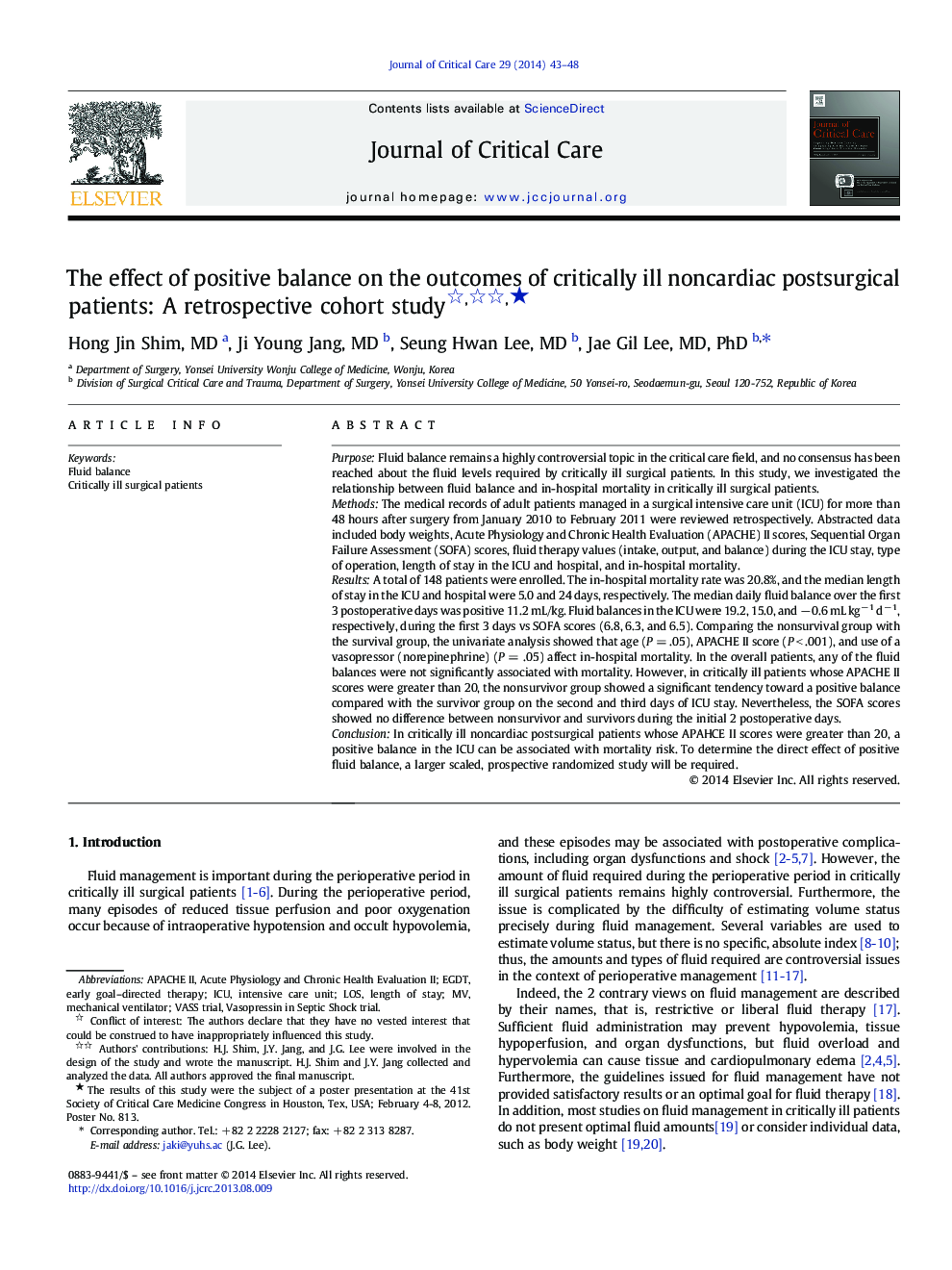| کد مقاله | کد نشریه | سال انتشار | مقاله انگلیسی | نسخه تمام متن |
|---|---|---|---|---|
| 2764652 | 1150934 | 2014 | 6 صفحه PDF | دانلود رایگان |
PurposeFluid balance remains a highly controversial topic in the critical care field, and no consensus has been reached about the fluid levels required by critically ill surgical patients. In this study, we investigated the relationship between fluid balance and in-hospital mortality in critically ill surgical patients.MethodsThe medical records of adult patients managed in a surgical intensive care unit (ICU) for more than 48 hours after surgery from January 2010 to February 2011 were reviewed retrospectively. Abstracted data included body weights, Acute Physiology and Chronic Health Evaluation (APACHE) II scores, Sequential Organ Failure Assessment (SOFA) scores, fluid therapy values (intake, output, and balance) during the ICU stay, type of operation, length of stay in the ICU and hospital, and in-hospital mortality.ResultsA total of 148 patients were enrolled. The in-hospital mortality rate was 20.8%, and the median length of stay in the ICU and hospital were 5.0 and 24 days, respectively. The median daily fluid balance over the first 3 postoperative days was positive 11.2 mL/kg. Fluid balances in the ICU were 19.2, 15.0, and − 0.6 mL kg− 1 d− 1, respectively, during the first 3 days vs SOFA scores (6.8, 6.3, and 6.5). Comparing the nonsurvival group with the survival group, the univariate analysis showed that age (P = .05), APACHE II score (P < .001), and use of a vasopressor (norepinephrine) (P = .05) affect in-hospital mortality. In the overall patients, any of the fluid balances were not significantly associated with mortality. However, in critically ill patients whose APACHE II scores were greater than 20, the nonsurvivor group showed a significant tendency toward a positive balance compared with the survivor group on the second and third days of ICU stay. Nevertheless, the SOFA scores showed no difference between nonsurvivor and survivors during the initial 2 postoperative days.ConclusionIn critically ill noncardiac postsurgical patients whose APAHCE II scores were greater than 20, a positive balance in the ICU can be associated with mortality risk. To determine the direct effect of positive fluid balance, a larger scaled, prospective randomized study will be required.
Journal: Journal of Critical Care - Volume 29, Issue 1, February 2014, Pages 43–48
